L.A. Plan to Reduce Traffic Ignites Fears of Gridlock – A Well Thought Out Scream By James Riordan
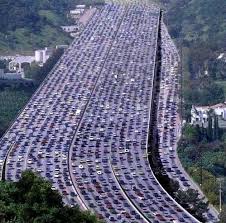
The Los Angeles City Council has approved a new transportation plan that will add hundreds of miles of bicycle lanes, bus-only lanes and pedestrian safety features. The upshot of this move is that the city known for its epic traffic jams is sacrificing car lanes to make way for bikes and buses. When you tell people who are already upset that they have to spend so much time bogging through jammed streets that you are reducing the available space there is for automobiles, one huge and awful thought comes to their minds – GRIDLOCK!
The far-reaching transportation plan approved by the City Council would reshape the traffic flow over the next twenty years as an effort to get more drivers out of their cars and using public transportation or other forms such as bicycling or walking to get where they need to go. To the residents, this spells disaster.
For one thing, Los Angeles is not a mass of blocks and buildings the way Manhattan is, for example. What most people mean when they say L.A., is an area composed of dozens of smaller cities. In many cases these pockets of humanity formed because of natural barriers to one huge urban sprawl. There are mountains to contend with in L.A. Granted, they’re not big mountains, like in the Rockies. They are more like giant hills or “movie set mountains” as some have called them. Nonetheless, they are not an easy bike ride. We’re talking over three thousand feet in many cases. If you live in Santa Monica, for instance, you can’t just walk or ride your bike to Van Nuys. The good folks of the L.A. City Council would say that is when you should ride the bus. In many cases, that makes sense. Now, granted, there are a lot of people in L.A. who simply will not ride a bus. And not just movie stars either. Los Angeles is a city of status conscious people and the bus is not a symbol of status. You might actually see poor people if you take the bus, to say nothing of the fact that it is hard to look rich and powerful while sitting on a bus.
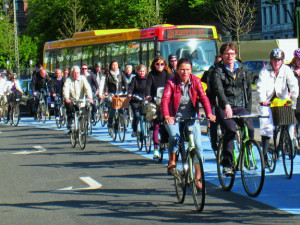 “What they’re trying to do is make congestion so bad, you’ll have to get out of your car,” said James O’Sullivan, a founder of Fix the City, a group that is planning a lawsuit to stop the plan. “But what are you going to do, take two hours on a bus? They haven’t given us other options.”
“What they’re trying to do is make congestion so bad, you’ll have to get out of your car,” said James O’Sullivan, a founder of Fix the City, a group that is planning a lawsuit to stop the plan. “But what are you going to do, take two hours on a bus? They haven’t given us other options.”
For Mayor Eric Garcetti, the Mobility Plan 2035, as the new program is being called, is part of a larger push to get people out of their cars and onto sidewalks that began with the expansion of the mass transit system championed by his immediate predecessor, Antonio R. Villaraigosa.
The salad days of driving here — when, so the saying went, it took 20 minutes to get anywhere in this city of 500 square miles — are gone, Mr. Garcetti said, and he has encouraged residents to instead stay local and shop at nearby businesses.
“The old model of a car-centric, different-neighborhood-for-every-task city is in many ways slipping through our fingers whether we like it or not,” Mr. Garcetti said. “We have to have neighborhoods that are more self-contained. People want to be able to walk or bike or take transit to a movie.”
The plan to remove car lanes offers a test of just how far public transit and pedestrian culture have come in Los Angeles: Forty years ago, when state officials turned one lane of a freeway into a car-pool lane, commuters revolted until a lawsuit undid the change.
Now, there are 87 miles of subway and light rail across the county, with five projects underway that will add 32 more miles. And ride-share services like Uber have helped make getting around without a car far more plausible.
In downtown Los Angeles, the population and night life have exploded in recent years, in part because it is the easiest area to get around without a car. A bike-sharing program, clustered around public transit stops, is coming to the neighborhood next year, with plans to expand around the city from there.
Mike Bonin, one of the city councilors who sponsored the mobility plan, said residents were eager to go “car-light.” “The number of folks who say they’d like to bike or walk more is huge,” Mr. Bonin said. “And the number who say they don’t because they think it’s not safe or clean or convenient is roughly the same.”
But the car still reigns: Nearly 80 percent of Los Angeles commuters get to work by car, with most of the rest on buses and only 1 percent on bikes.
Bruce Feldman, who has lived in Southern California for more than six decades, worried that under the transportation plan, residents could end up fenced into their own neighborhoods by traffic. The number of intersections where traffic crawls most slowly, according to city estimates, will double by 2035 under the plan.
“There are so many things going on in L.A., but if you can’t get to them, what’s the point of living here?” said Mr. Feldman, 67, who runs a luxury gift business and lives in Santa Monica, which already has its own network of bike lanes — and gridlock problems. “I’m not opposed to bikes, but you’re going to be dead before you see the city these people envision, so what do we do until then?”
Though the plan passed the City Council in August with overwhelming support, obstacles remain. In addition to the lawsuit, local opposition could become stronger once city transportation workers are preparing to paint over lanes.
“The reality is that Southern California is built around the automobile,” said Gil Cedillo, one of two Council members to vote against the plan. “We’re going to make more traffic and create even greater congestion. I don’t know how anybody votes for that.”
He said few of the constituents in his lower-income district would use the bike lanes, while everyone would suffer as traffic worsened.
“It’s a very elitist policy,” he said.
And while buses have proved essential for lower-income Angelenos, few people who can afford a car ride them, Mr. Cedillo said, adding that he doubted the situation would change.
After moving west from New York, Gabrielle deBarros initially commuted to work on public transit. But she often found that walking two miles was faster than waiting for the bus. Now that she has a car, the addition of bus-only lanes will not change her habits, she said.
“L.A. desperately needs some improvement in mass transit,” said Ms. deBarros, who now stays at home to raise her daughter. “But I don’t think most people out here are going to say, ‘I’m going to take the bus,’ unless getting in the car would just be madness.”
Many changes to the streetscape are already taking place. Mr. Garcetti was recently in East Los Angeles, signing a directive that laid out a goal of cutting traffic deaths to zero in 10 years. Traffic signals had been added to the street behind him, curbs had been widened, and tighter enforcement of speed limits was promised all over the city.
Similar changes are coming to other neighborhoods, where streets are being put on “road diets” — meaning that lanes will be removed to slow traffic and make life on foot and two wheels safer and more appealing. (Mr. Villaraigosa once broke his elbow while biking after a taxi cut him off.)
“Even if more people don’t commute by bike or on a bus, if it reduces pedestrian and bike fatalities, I’d call it a win,” said Lisa Schweitzer, a professor at the Sol Price School of Public Policy at the University of Southern California.
But she added, “The unstated secret of most bike or alternative commuting plans is that it has to get more expensive to use the car.”
For Jackie Hesley, a real estate agent, any additional congestion will be worth it to feel safer in her own neighborhood.
“It’s like a game of Frogger trying to cross the street to go to the store,” said Ms. Hesley, 47. “I dodge here, dodge there, and no one slows down.”
But when asked if she would take the bus, she shook her head.
“I don’t ride the bus,” she said. She drives 12 miles to work each day instead.
Mr. Garcetti compared people who fear that removing lanes will make the streets horrific to lobsters boiling slowly in a pot: The changes may make traffic 15 percent worse instead of just 5 percent worse each year, he said, but the situation is already becoming untenable.
“The lobster dies eventually,” he said. “And we’re getting close to that boiling point.”



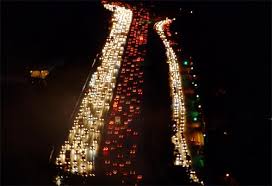
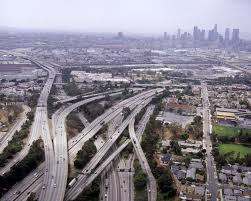

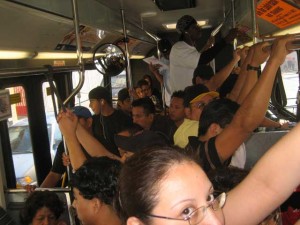
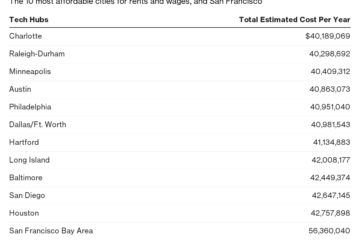

No Comment